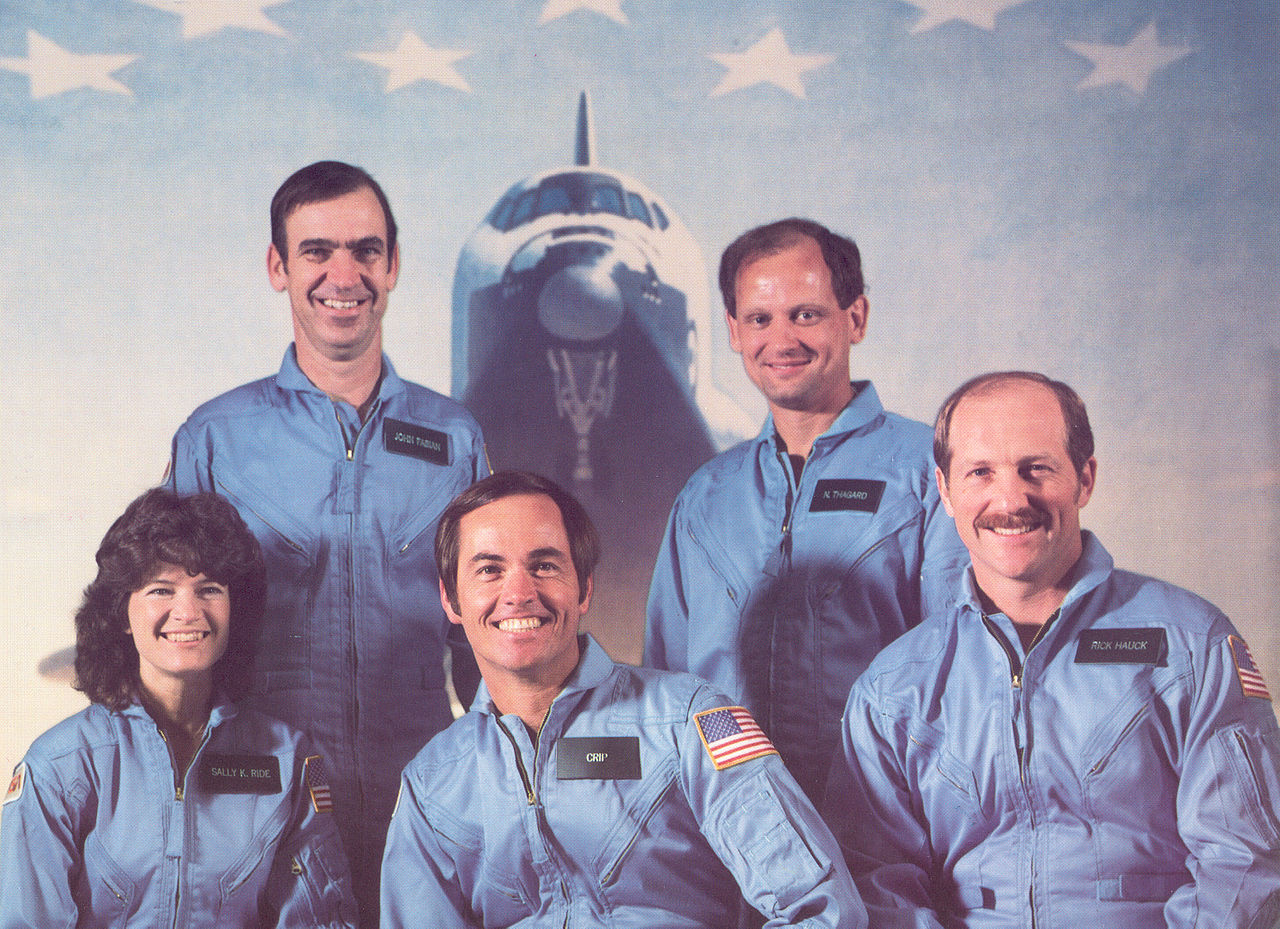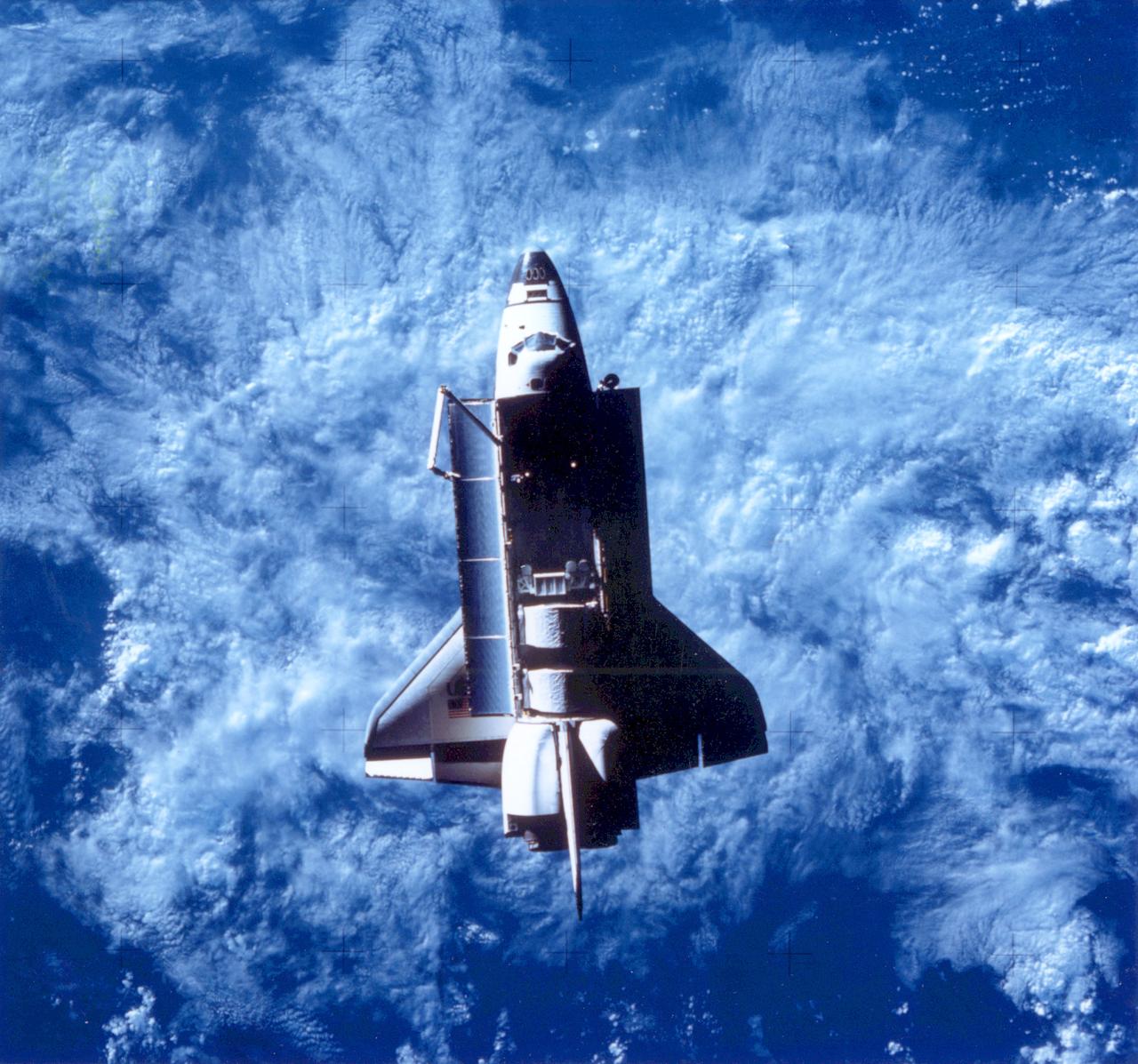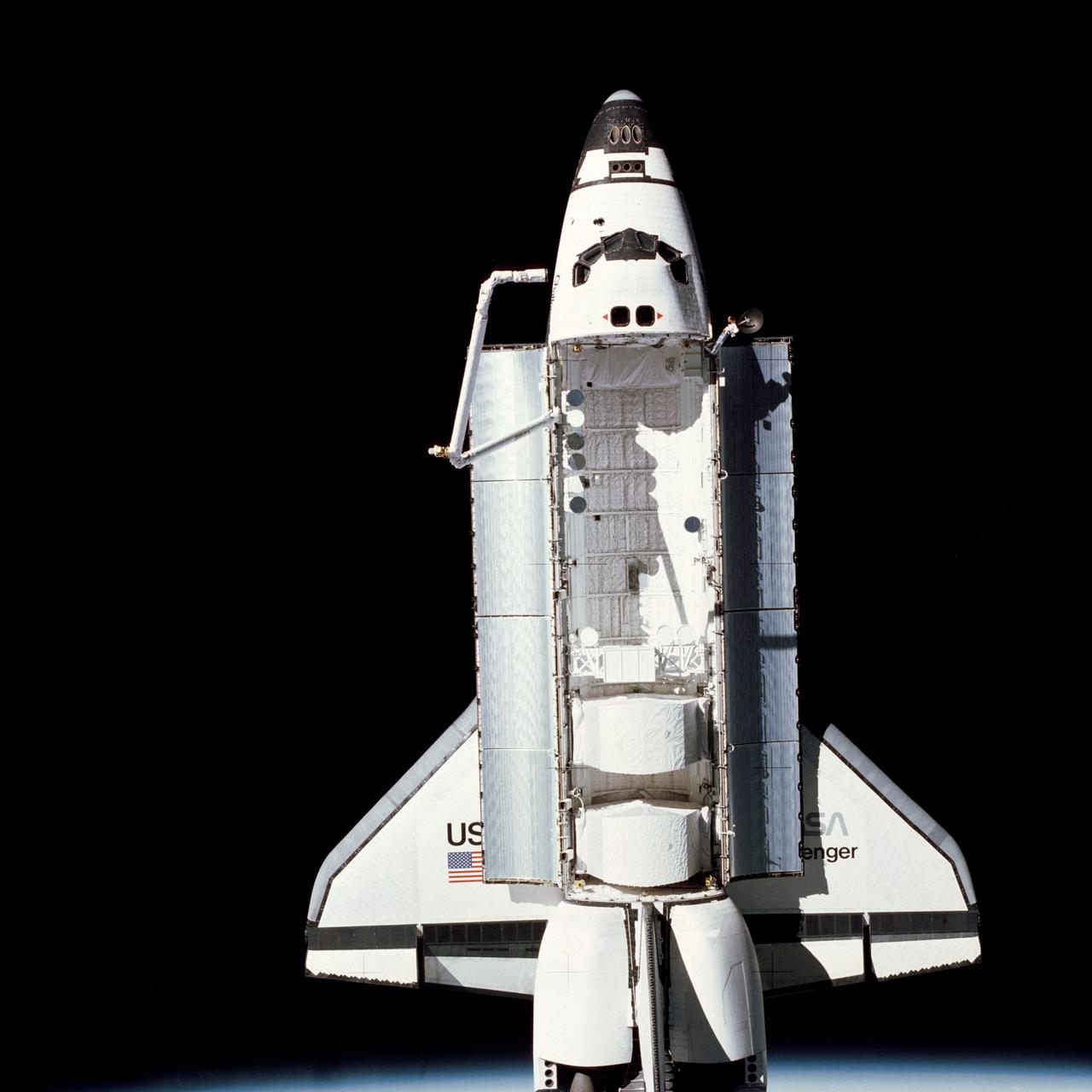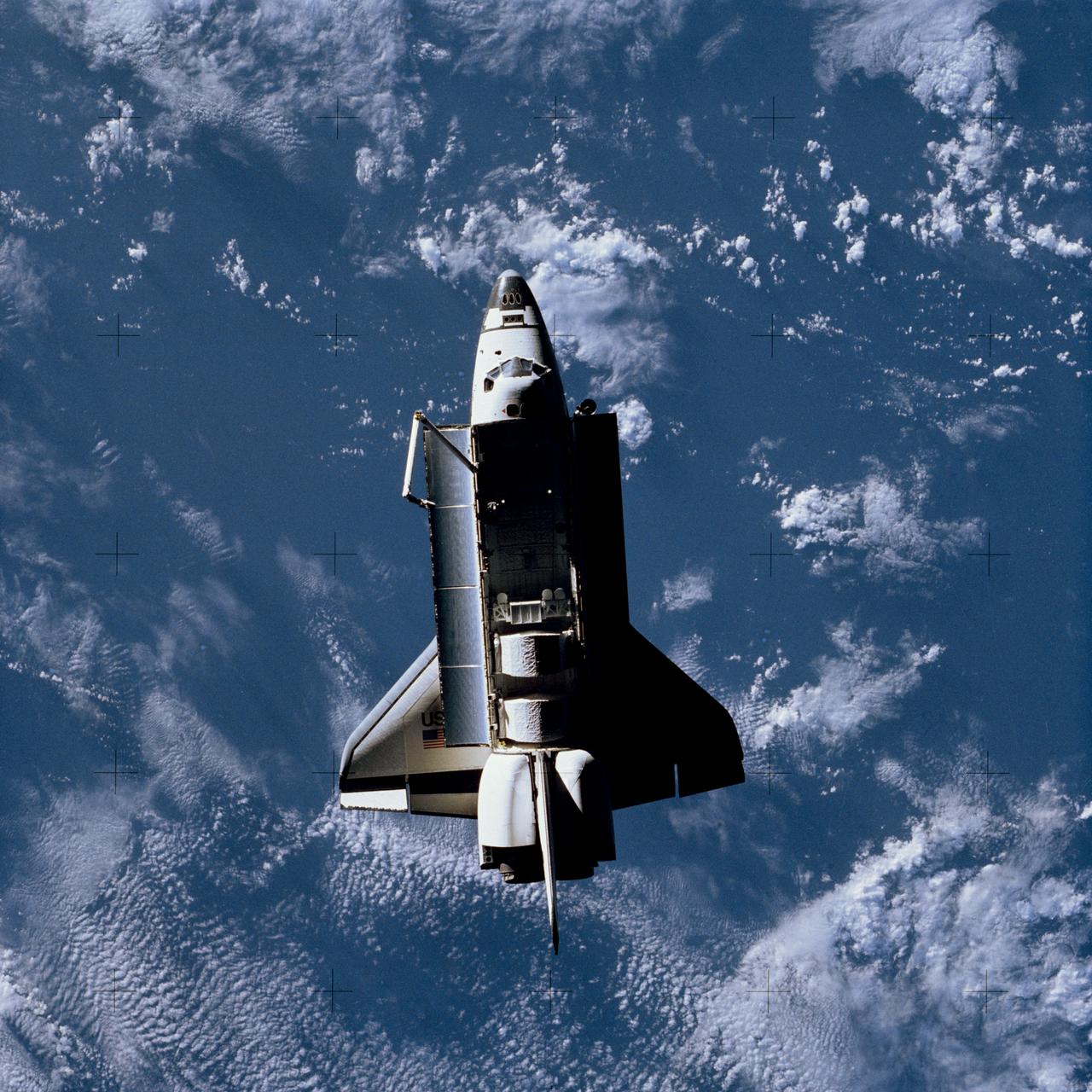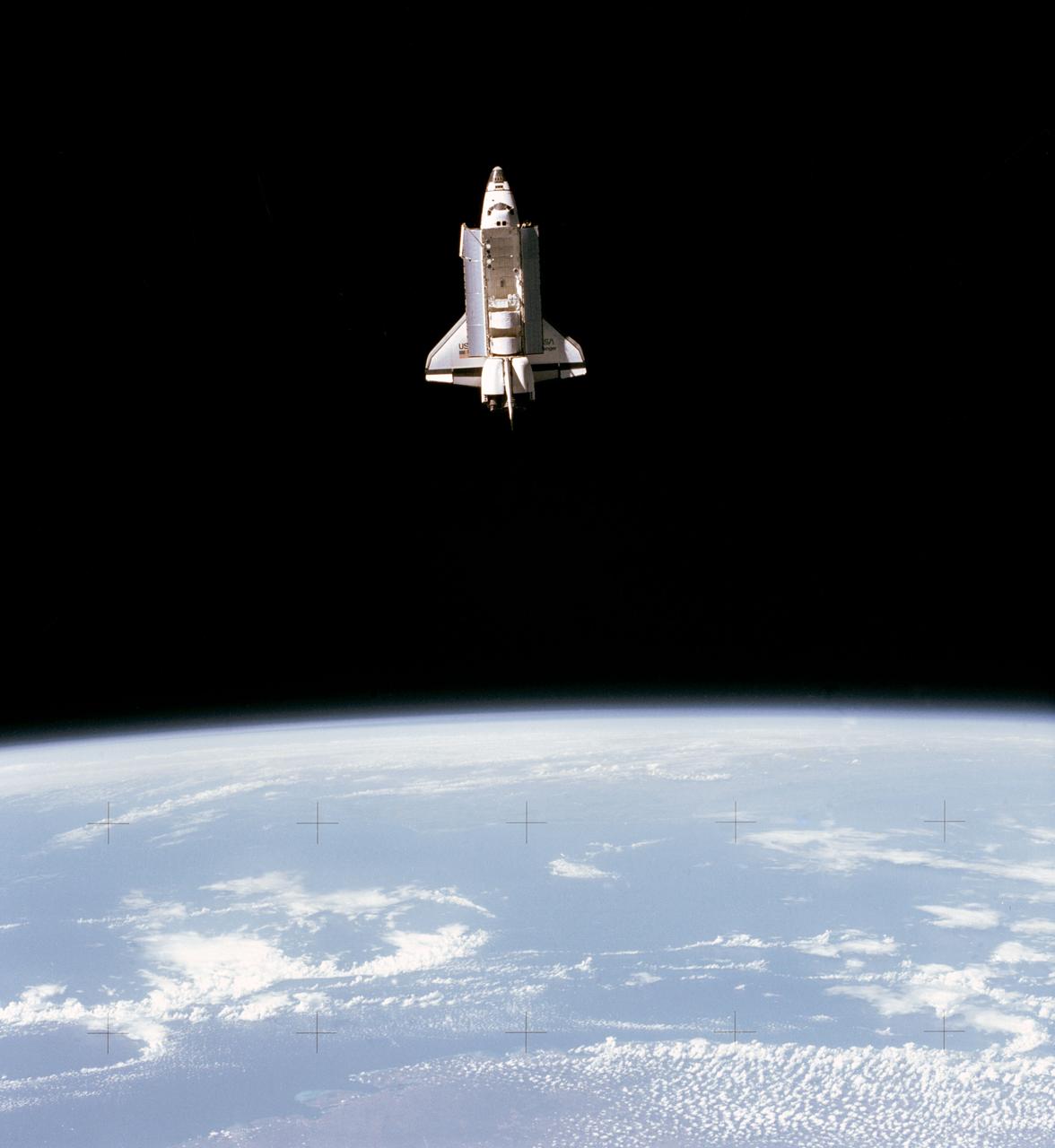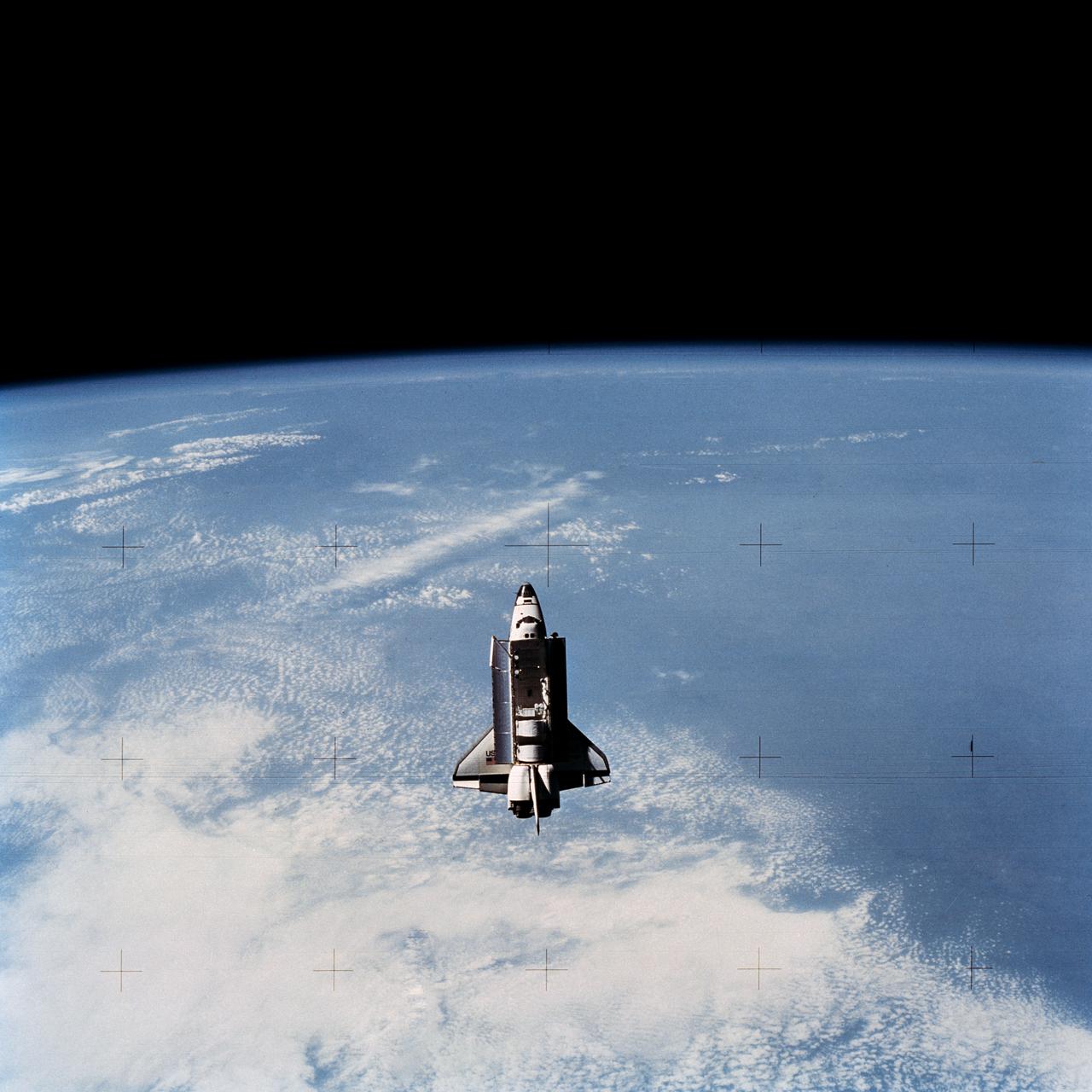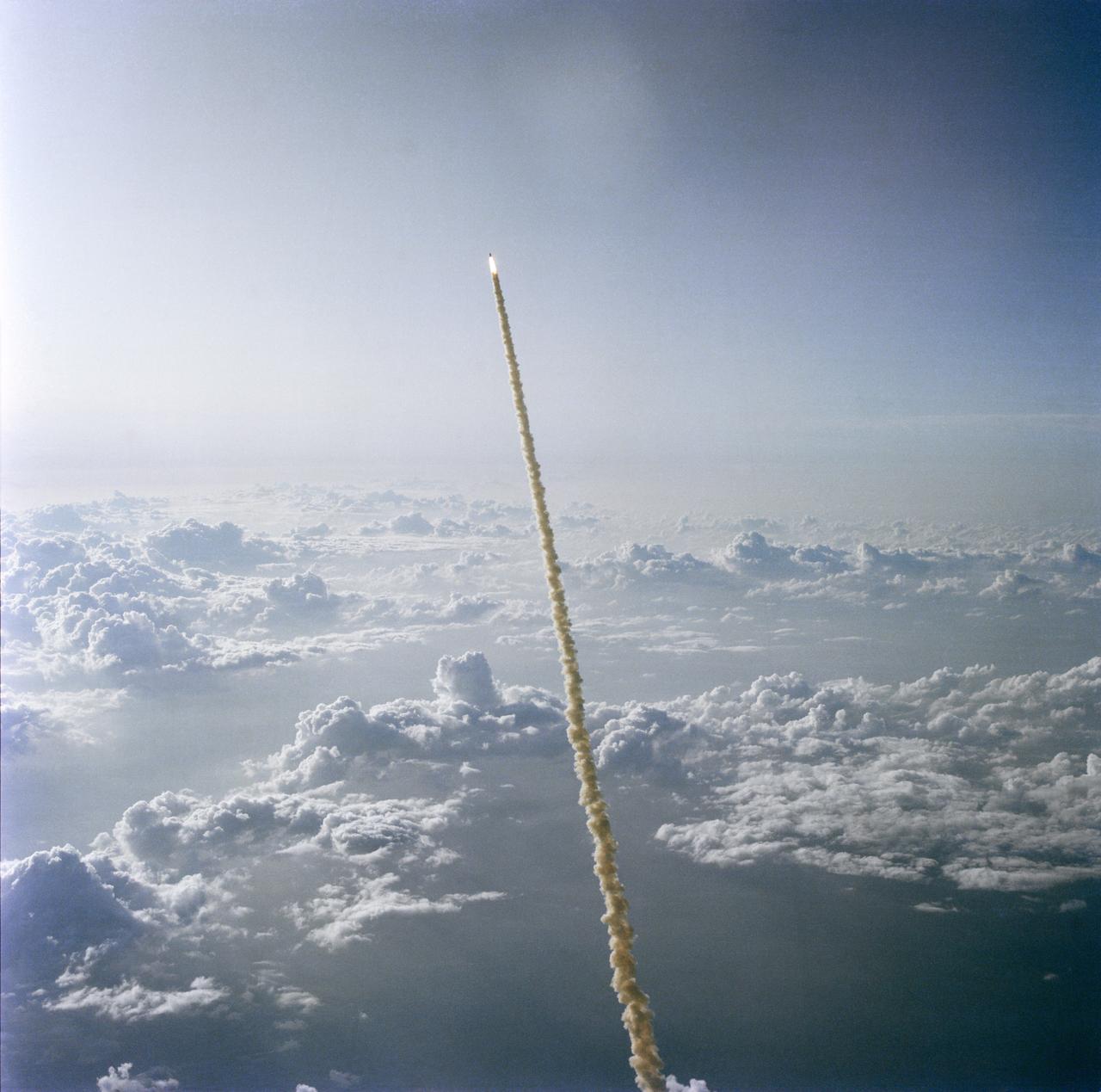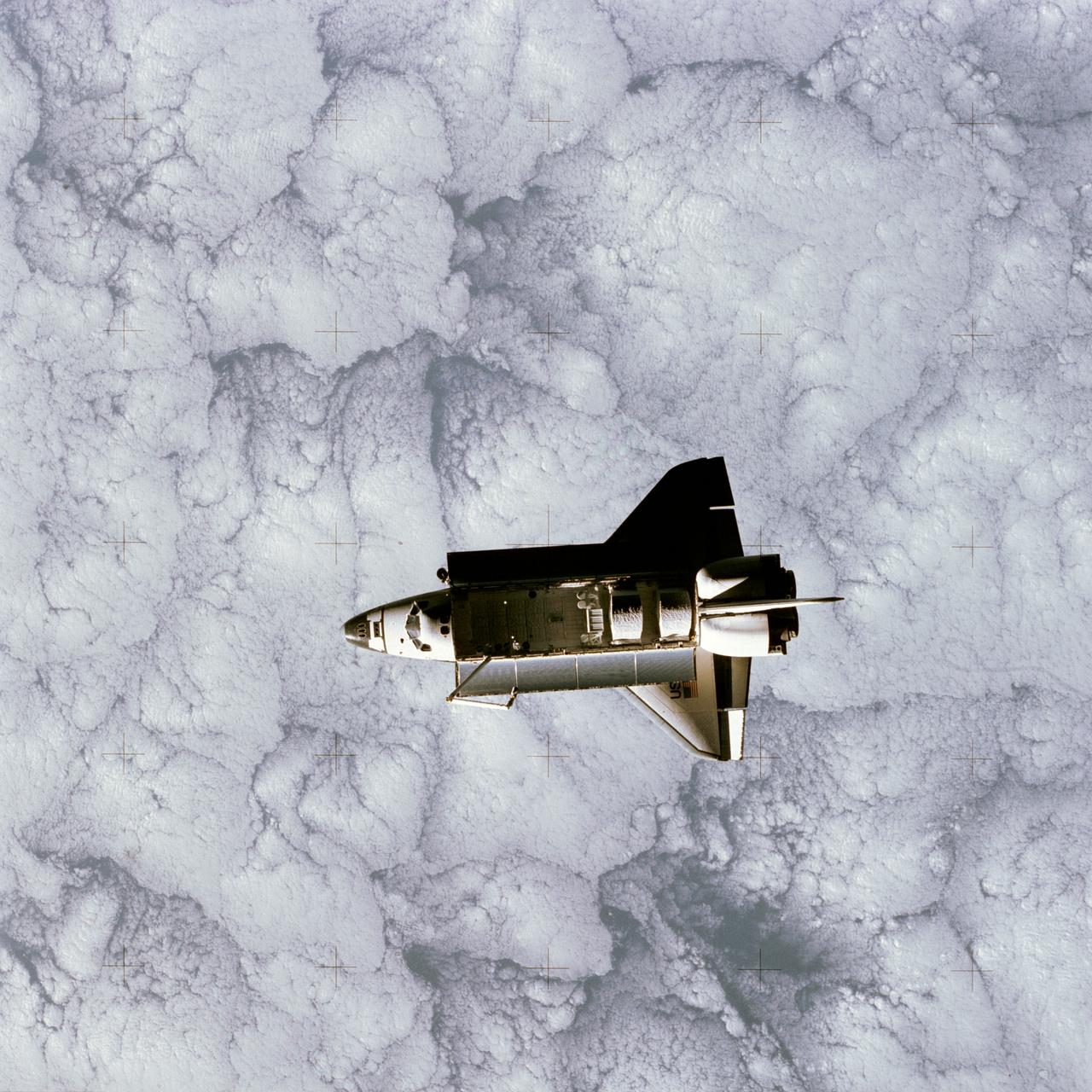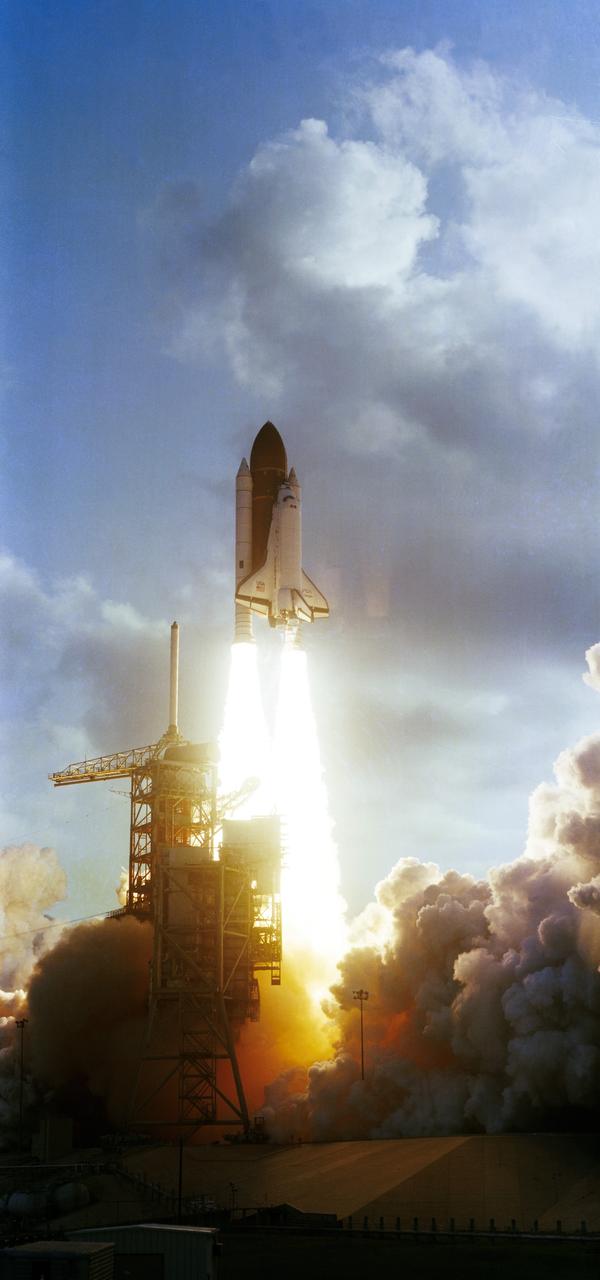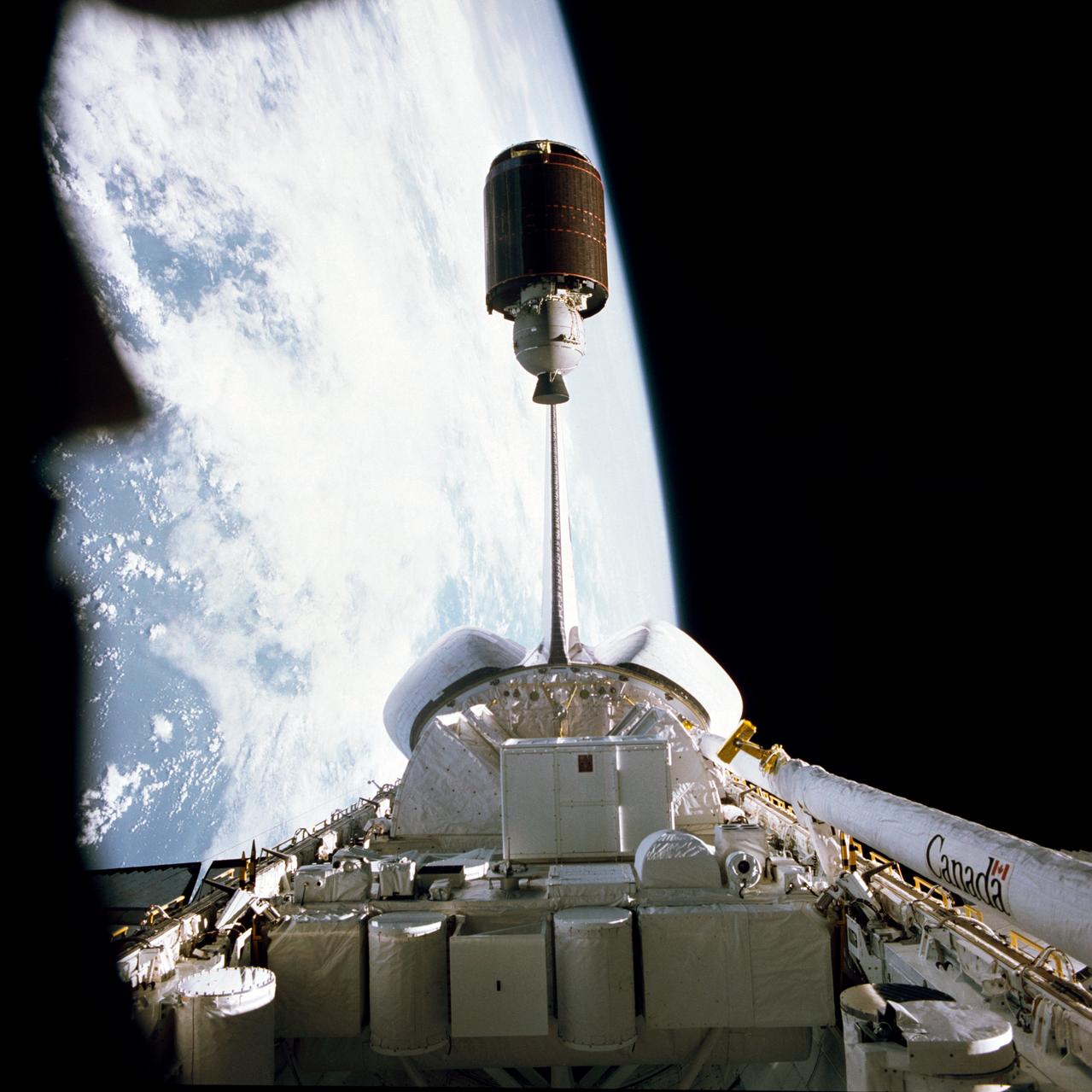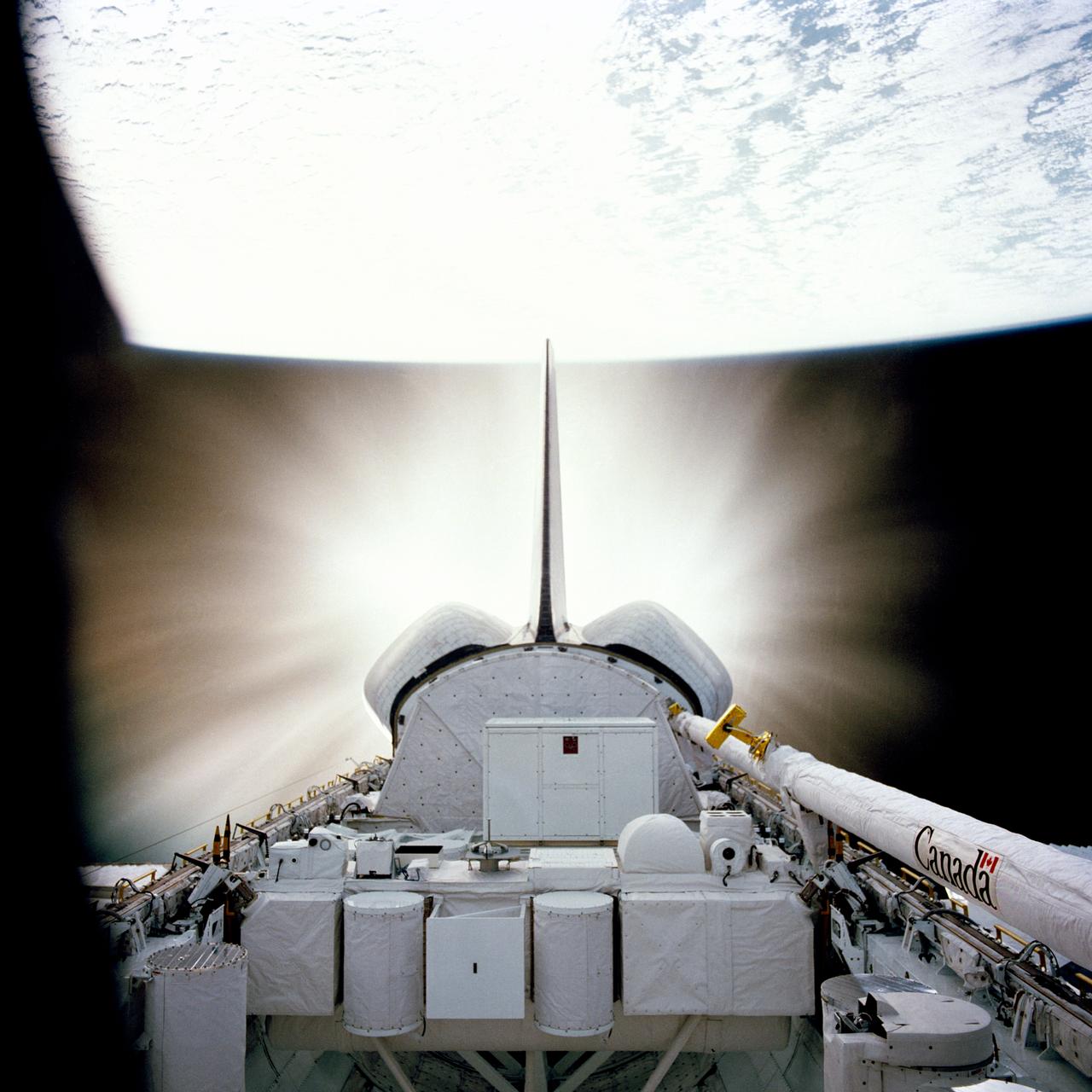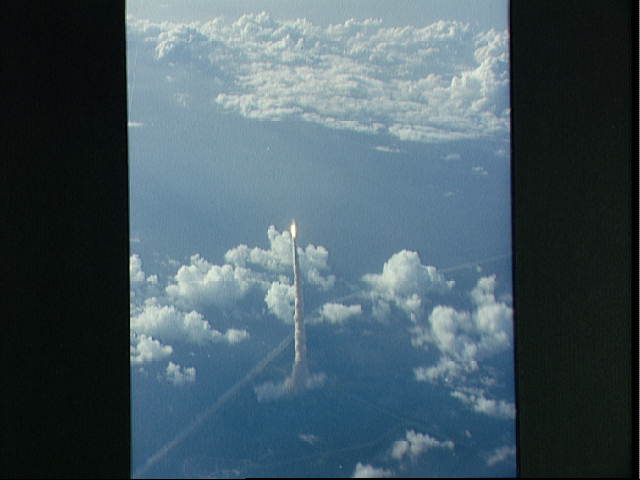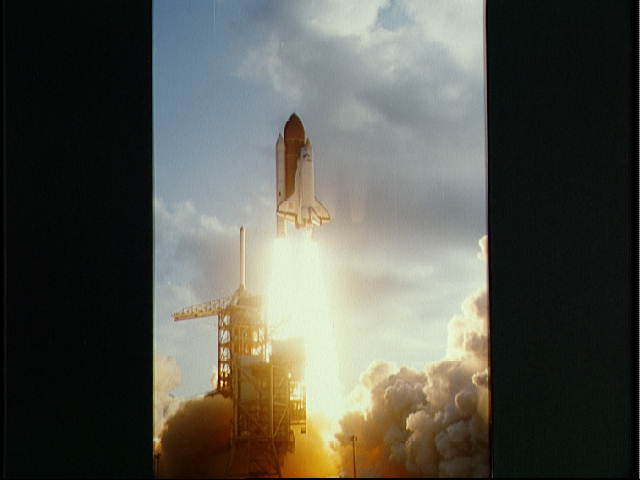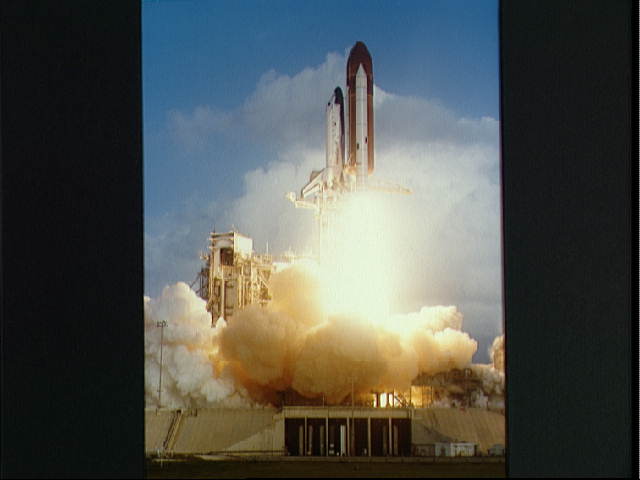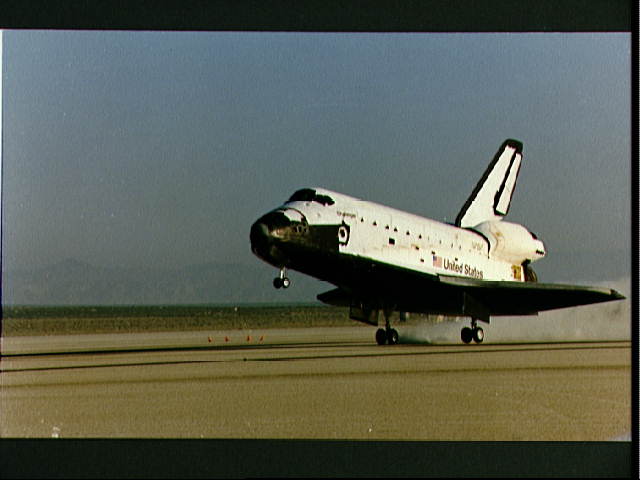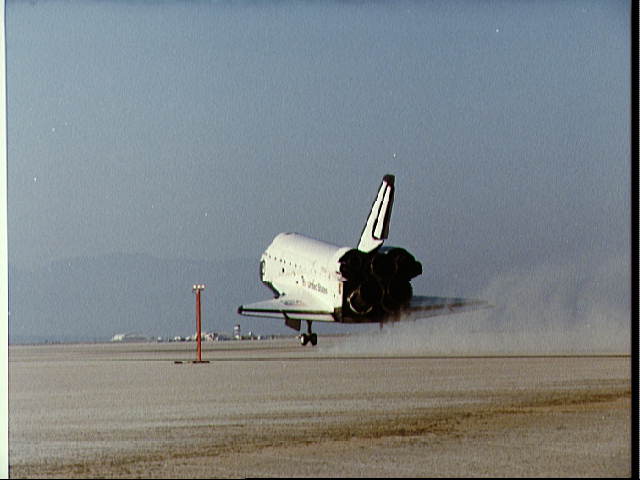STS-7 Fact Sheet
By Cliff Lethbridge

STS-7 — Challenger
7th Space Shuttle Mission
2nd Flight of Challenger
Crew:
Robert L. Crippen, Commander
Frederick H. Hauck, Pilot
John M. Fabian, Mission Specialist
Sally K. Ride, Mission Specialist
Norman E. Thagard, Mission Specialist
Orbiter Preparations:
Tow to Orbiter Processing Facility – April 17, 1983
Rollover to Vehicle Assembly Building – May 21, 1983
Rollout to Launch Pad 39A – May 26, 1983
Launch:
June 18, 1983 – 7:33:00 a.m. EDT. Launch occurred as scheduled with no delays.
Landing:
June 24, 1983 – 6:56:59 a.m. PDT at Runway 15, Edwards Air Force Base, California. Rollout distance was 10,450 feet. Rollout time was 75 seconds. Mission duration was 6 days, 2 hours, 23 minutes, 59 seconds. Landing occurred during the 98th orbit. The first planned Space Shuttle landing at the Kennedy Space Center was canceled due to poor weather.
Mission Summary:
Sally K. Ride became the first American woman to fly in space. Two communications satellites were deployed. The ANIK C-2 was deployed for TELESAT Canada and the PALAPA-B1 was deployed for the government of Indonesia. Both satellites were attached to PAM-D solid rocket motors.
Seven GAS canisters were flown, one of which included a study on the effects of microgravity on an ant colony. Ten experiments were mounted on the Shuttle Pallet Satellite (SPAS-01), including the testing of metal alloy formation and use of a remote sensing scanner.
Challenger’s remote manipulator arm grasped SPAS-01 while the Shuttle’s control rockets fired to test the movement of the pallet while attached to the arm.
Experiments on space sickness were performed. Other payloads included Office of Space and Terrestrial Applications-2 (OSTA-2), Continuous Flow Electrophoresis System (CFES), Monodisperse Latex Reactor (MLR) and one SSIP experiment.
SELECTED NASA PHOTOS FROM STS-7
